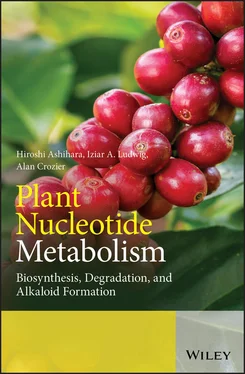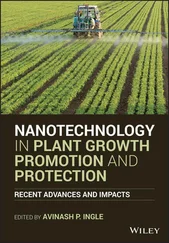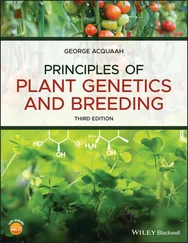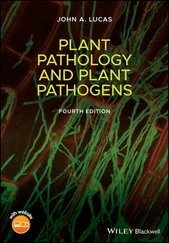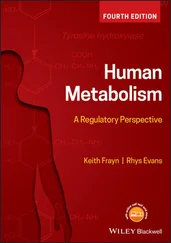Library of Congress Cataloging-in-Publication Data
Name: Ashihara, Hiroshi, author.
Title: Plant nucleotide metabolism : biosynthesis, degradation, and alkaloid formation / Hiroshi Ashihara, Emeritus Professor, Ochanomizu University, Tokyo, Japan, Iziar A. Ludwig, University Rovira I, Virgili, Spain, Alan Crozier, University of California, Davis and University of Glasgow, UK.
Description: First edition. | Hoboken : Wiley, 2020. | Includes bibliographical references and index.
Identifiers: LCCN 2019047672 (print) | LCCN 2019047673 (ebook) | ISBN 9781119476122 (hardback) | ISBN 9781119476108 (adobe pdf) | ISBN 9781119476078 (epub)
Subjects: LCSH: Plants–Metabolism. | Nucleotides–Metabolism.
Classification: LCC QK881 .A74 2020 (print) | LCC QK881 (ebook) | DDC 572/.42–dc23
LC record available at https://lccn.loc.gov/2019047672
LC ebook record available at https://lccn.loc.gov/2019047673
Cover Design: Wiley
Cover Image: © Mazur Travel/Shutterstock
Almost all organisms produce nucleobases, nucleosides and nucleotides of purines and pyrimidines. There have been a number of books on nucleotide metabolism in microorganisms and humans. However, this is the first to focus on plants which exhibit important differences to other organisms in key areas of nucleotide metabolism and function.
The book covers the metabolism of purine, pyrimidine and pyridine nucleotides and nucleotide alkaloids in higher plants and points out differences from that occurring in other organisms. Likewise, differences in the salvage pathways and diversity of interconversions in plants, fungi and bacteria are highlighted. Various physiological aspects of these processes are covered along with their involvement in the control of plant growth and development. Among the topics covered are the purine alkaloids caffeine, theobromine and their metabolites which, in species including coffee, tea and cocoa, accumulate in quantity. There is also discussion of the function of purine alkaloids and the potential allelopathic role of caffeine. Studies, some making use of genetically-modified plants, have indicated that caffeine can play a role in a variety of plant defence strategies. Other investigations have provided evidence that trigonelline, found principally in coffee and legumes, has a role in resistance to salt stress and can act as a natural pesticide to reduce insect infestations. Finally, the book explores the absorption, metabolism and potential impact on health of dietary caffeine, theobromine and trigonelline
The book provides comprehensive information on nucleotide structures and metabolic pathways and is a unique resource on a diversity of topics and as such is essential reading for students, researchers, and lecturers in plant biochemistry, physiology, chemistry, agricultural sciences, nutrition and the associated applied fields of research.
We owe special thanks Professors Tatsuhito Fujimura, Claudio Stasolla and Takao Yokota for their help with some of the figures and advice on genes encoding key enzymes and chemical structures for the book.
Hiroshi Ashihara
Iziar A. Ludwig
Alan Crozier
Part I General Aspects of Nucleotide Metabolism
1 Structures of Nucleotide-Related Compounds
1.1 Introduction
The chemistry of purine, pyrimidine, and pyridine nucleobases, nucleosides, and nucleotides constitute one of the oldest topics in biochemistry. In this chapter, the nomenclature and structures of nucleotides are briefly described.
1.2 Nomenclature and Abbreviations of Nucleotide-Related Compounds
The nucleotide nomenclature and abbreviations employed in the text are those used by Henderson and Paterson (1973) in their textbook ‘ Nucleotide Metabolism – An Introduction ’. The terms ‘nucleoside’ and ‘nucleotide’ in the strictest sense refer, respectively, to N -glycosides and phosphorylated N -glycosides derived from nucleic acids. However, they are now used in a wider context. N -Ribosides, such as nicotinamide mononucleotide (NMN), are called nucleotides only by extension and analogy, and nicotinamide adenine dinucleotide (NAD) and nicotinamide adenine dinucleotide phosphate (NADP) are referred to as dinucleotides. Flavin mononucleotide (FMN) is a step further removed, as it contains ribitol, a pentose alcohol formed by the reduction of ribose, instead of ribose, while flavin adenine dinucleotide (FAD) similarly extends the meaning of dinucleotide. N -Glycosides such as orotidine 5′-monophosphate (OMP) and adenylosuccinate (SAMP) are called nucleotides through their close relationship to the ‘true’ nucleotides. The terms ribonucleoside and ribonucleotide are used in preference to riboside and ribotides. The IUPAC-IUB Combined Commission on Biochemical Nomenclature has abbreviations and symbols for nucleotides and related compounds. However, as argued by Henderson and Paterson (1973), while they are appropriate for polynucleotides, the distinction between bases and nucleosides is not always immediately obvious, and this has limited their use. The abbreviations used here are more intuitive and better suited to the portrayal of reaction schemes in which the addition or removal of substituent groups occurs.
In Table 1.1, the abbreviations for the major nucleotides, ribo- and deoxyribonucleotides and nucleobases are presented. For readers convenience, the styles used both in this book (style #1) and those recommended by IUPAC (style #2) are shown.
Table 1.1 Nomenclature and abbreviations of purine and pyridine ribo- and deoxyribonucleotides and related compounds.
| Ribonucleotides |
|
Ribonucleosides |
#1 |
#2 |
Nucleobases |
#1 |
#2 |
| Adenosine-5′-monophosphate |
AMP |
Adenosine |
AR |
Ado |
Adenine |
A |
Ade |
| Guanosine-5′-monophosphate |
GMP |
Guanosine |
GR |
Guo |
Guanine |
G |
Gua |
| Inosine-5′-monophosphate |
IMP |
Inosine |
IR |
Ino |
Hypoxanthine |
H |
Hyp |
| Xanthosine-5′-monophosphate |
XMP |
Xanthosine |
XR |
Xao |
Xanthine |
X |
Xan |
| Uridine-5′-monophosphate |
UMP |
Uridine |
UR |
Urd |
Uracil |
U |
Ura |
| Cytidine-5′-monophosphate |
CMP |
Cytidine |
CR |
Cyd |
Cytosine |
C |
Cyt |
| Orotidine-5′-monophosphate |
OMP |
Orotidine |
OR |
Ord |
Orotic acid |
O |
Oro |
|
| Deoxyribonucleotides |
|
Deoxyribonucleosides |
#1 |
#2 |
Nucleobases |
#1 |
#2 |
| Deoxyadenosine-5′-monophosphate |
dAMP |
Deoxyadenosine |
AdR |
dAdo |
Adenine |
A |
Ade |
| Deoxyguanosine-5′-monophosphate |
dGMP |
Deoxyguanosine |
GdR |
dGuo |
Guanine |
G |
Gua |
| Deoxyuridine-5′-monophosphate |
dUMP |
Deoxyuridine |
UdR |
dUrd |
Uracil |
U |
Ura |
| Deoxycytidine-5′-monophosphate |
dCMP |
Deoxycytidine |
CdR |
dCyd |
Cytosine |
C |
Cyt |
| Thymidine-5′-monophosphate |
dTMP |
Thymidine |
TdR |
dThd |
Thymine |
T |
Thy |
Two types of symbols are used for nucleoside and nucleobases. Style #1: recommended in Nucleotide Metabolism (Henderson and Paterson 1973). Style #2: recommended by the IUPAC-IUB Commission on Biochemical Nomenclature (1970). In this book, style #1 is adopted.
Читать дальше
